mob
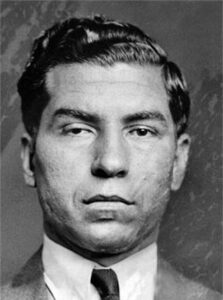
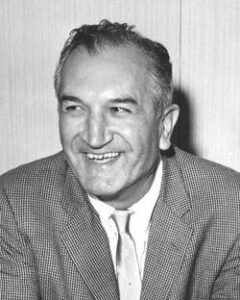 The establishment of prohibition, while originally designed to be a good thing, actually made criminals out of some people, both those who liked to have a drink and those who sold and made the alcohol. By 1931, the mob had organized. After a series of power struggles and murders, mobster Charles “Lucky” Luciano established the “Commission,” a governing body headed by five New York City crime families. Thus began four decades under the rule of the “Five Families” using tactics like loansharking, extortion, and labor union infiltration to influence and profit from a range of businesses. “They didn’t rob banks…they didn’t have to,” says Selwyn Raab, author of Five Families: The Rise, Decline, and Resurgence of America’s Most Powerful Mafia Empires. “They
The establishment of prohibition, while originally designed to be a good thing, actually made criminals out of some people, both those who liked to have a drink and those who sold and made the alcohol. By 1931, the mob had organized. After a series of power struggles and murders, mobster Charles “Lucky” Luciano established the “Commission,” a governing body headed by five New York City crime families. Thus began four decades under the rule of the “Five Families” using tactics like loansharking, extortion, and labor union infiltration to influence and profit from a range of businesses. “They didn’t rob banks…they didn’t have to,” says Selwyn Raab, author of Five Families: The Rise, Decline, and Resurgence of America’s Most Powerful Mafia Empires. “They  did all these more elegant, sophisticated crimes, because they paid more and there was less danger.” The five mob families established or basically took over a lot of different operations. They especially ran gambling and drug trafficking rings, but they also held controlling interest in construction and transportation companies.
did all these more elegant, sophisticated crimes, because they paid more and there was less danger.” The five mob families established or basically took over a lot of different operations. They especially ran gambling and drug trafficking rings, but they also held controlling interest in construction and transportation companies.
The Five Families…Genovese, Bonanno, Lucchese, Gambino and Colombo…were immigrants from Italy, particularly Sicily. Some of these were not new to the world of crime. They already had ties to Sicilian crime families, who operated according to a code of honor known as omertà…”a rule or code that prohibits speaking or divulging information about certain activities, particularly those related to criminal organizations. Omertà originated in Italy, specifically Sicily, and is often associated with the Mafia, where it represents a vow of silence regarding criminal activities and cooperation with authorities.” Because of their ties, the Five Families incorporated the concept of omertà 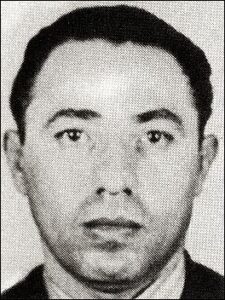
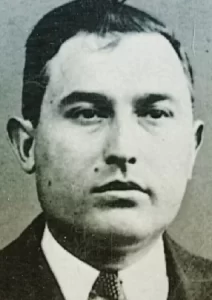 into the Commission. That effectively prohibited mobsters from ratting out members of their own family, as well as other families on the Commission…and it worked for a while.
into the Commission. That effectively prohibited mobsters from ratting out members of their own family, as well as other families on the Commission…and it worked for a while.
While the Five Families spent time in power, their influence diminished after the United States passed the 1970 Racketeer Influenced and Corrupt Organizations Act (RICO Act), which gave the government new ways to prosecute organized crime. The effectiveness of the act led mobsters to break omertà and become informants, and it even resulted in one boss flipping on his family. It is a matter of survival I guess, and apparently, while blood is thicker than water, self-preservation tops them both.
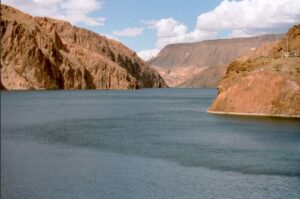
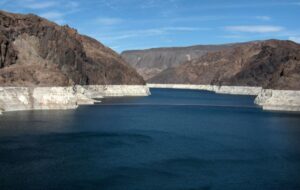 As a kid, I remember going to the Grand Canyon, Las Vegas, and Lake Mead. I particularly enjoyed Lake Mead, because the water was warm, unlike most lakes. At the time, and for many years afterward, I really didn’t know much about the lake, its origins, or its secrets. These days, I maybe know too much about its secrets. In fact, some of them are really creepy. Many lakes sport hidden ghost towns, underground ranches, and various sunken boats. There are probably more bodies in them that we know or want to think about too, but when a drought occurs and we find ourselves hearing about body after body being found in a lake that is close to one of the big mob-controlled areas of the nation, it makes you wonder exactly what happened here and just how many more bodies will surface. Well, in the case of Lake Mead, the answer is a total of five bodies…so far. Who knows how many more will surface.
As a kid, I remember going to the Grand Canyon, Las Vegas, and Lake Mead. I particularly enjoyed Lake Mead, because the water was warm, unlike most lakes. At the time, and for many years afterward, I really didn’t know much about the lake, its origins, or its secrets. These days, I maybe know too much about its secrets. In fact, some of them are really creepy. Many lakes sport hidden ghost towns, underground ranches, and various sunken boats. There are probably more bodies in them that we know or want to think about too, but when a drought occurs and we find ourselves hearing about body after body being found in a lake that is close to one of the big mob-controlled areas of the nation, it makes you wonder exactly what happened here and just how many more bodies will surface. Well, in the case of Lake Mead, the answer is a total of five bodies…so far. Who knows how many more will surface.
One body was found in a barrel, with a gun nearby, causing speculation of a mob killing, and possibly making people who might have been the perpetrators of mob murders…if they are still alive, to become a little nervous about their crimes being found out. Of course, the police aren’t telling us much, but it is said that the body in the barrel, discovered in May, had been shot in the head and after being stuffed in the barrel it was thrown overboard, in the hope that it would never be seen again. It was the type of killing that was classic mob style, or so we’ve been told in the movies. Las Vegas was, and maybe still is, a big mob crime city, and this type of killing was a trademark in the 1970s and 19802. So, it is entirely possible that the killer is still alive and could be brought to justice.
Shortly after the body in the barrel was found, another body surfaced, and then in July a third body was found. Days after the body in the barrel surfaced, another corpse was reported. A third was discovered in July. Now, the skeletal remains of two more people were found just this month in the Swim Beach area. It makes me 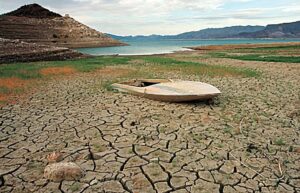
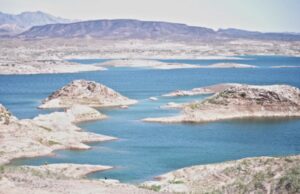 wonder how many more bodies will surface, if the drought continues and the lake level continues to drop. The lake level has dropped nearly 200 feet due to two decades of drought. Right now, the lake is very close to the level it was when it was originally filled after the building of Hoover Dam. I guess the old saying about the truth finding you out is true. the bodies, some long hidden, are coming out to tell of their demise.
wonder how many more bodies will surface, if the drought continues and the lake level continues to drop. The lake level has dropped nearly 200 feet due to two decades of drought. Right now, the lake is very close to the level it was when it was originally filled after the building of Hoover Dam. I guess the old saying about the truth finding you out is true. the bodies, some long hidden, are coming out to tell of their demise.
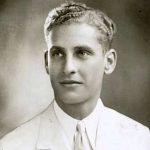 When a vicious killer is caught, sometimes the townspeople lose control of their emotions and take matters into their own hands. While it is a little less common these days, people would sometimes storm the jail to execute the prisoners themselves. Often it was thought that justice would not be served in the court system. People fear the possibility that the killer might get off and be back out in society again. These days, it is pretty hard to storm a jail, but jails weren’t as secure then, as they are now.
When a vicious killer is caught, sometimes the townspeople lose control of their emotions and take matters into their own hands. While it is a little less common these days, people would sometimes storm the jail to execute the prisoners themselves. Often it was thought that justice would not be served in the court system. People fear the possibility that the killer might get off and be back out in society again. These days, it is pretty hard to storm a jail, but jails weren’t as secure then, as they are now.
On November 9, 1933, Brooke Hart was abducted by two men in his own Studebaker. His family received a $40,000 ransom demand and, soon after, Hart’s wallet was found on a tanker ship in a nearby bay. The investigative trail led to John Holmes and Thomas Thurmond, who implicated each other in separate confessions. Both acknowledged, that Hart had been pistol-whipped and then thrown off the San Mateo Bridge. After Hart’s body 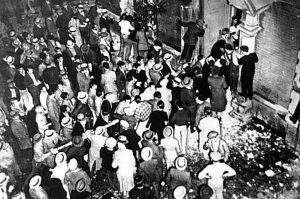 washed ashore on November 25, a vigilante mob began to form. Newspapers reported the possibility of a lynching and local radio stations broadcast the plan. Not only did Governor James Rolph reject the National Guard’s offer to send assistance, he reportedly said he would pardon those involved in the lynching. Now, when you have a governor who is on the side on the lynch mob, you have a volatile situation.
washed ashore on November 25, a vigilante mob began to form. Newspapers reported the possibility of a lynching and local radio stations broadcast the plan. Not only did Governor James Rolph reject the National Guard’s offer to send assistance, he reportedly said he would pardon those involved in the lynching. Now, when you have a governor who is on the side on the lynch mob, you have a volatile situation.
On November 26, 1933, thousands of people in San Jose, California, stormed the jail where Thomas Thurmond and John Holmes were being held. The angry mob converged at the jail and beat the guards, using a battering ram to break into the cells. Then, Thurmond and Holmes were dragged out and hanged from large trees in a nearby park. Contrary to the way most of us think, when our emotions aren’t raw, the public seemed to welcome the gruesome act of vigilante violence. After the incident, pieces of the lynching ropes were sold to 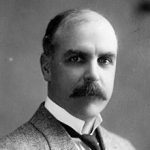 the public. Though the San Jose News declined to publish pictures of the lynching, it condoned the act in an editorial. Seventeen-year-old Anthony Cataldi bragged that he had been the leader of the mob but he was not held accountable for his participation. At Stanford University, a professor asked his students to stand and applaud the lynching. Perhaps most disturbing, Governor Rolph publicly praised the mob. “The best lesson ever given the country,” said Governor Rolph. “I would like to parole all kidnappers in San Quentin to the fine, patriotic citizens of San Jose.” I understand the anger, but not the method. While the two killers might have deserved the death penalty for their crimes, this was not the way it should have happened. Nevertheless, I guess justice was served…even if it was vigilante justice.
the public. Though the San Jose News declined to publish pictures of the lynching, it condoned the act in an editorial. Seventeen-year-old Anthony Cataldi bragged that he had been the leader of the mob but he was not held accountable for his participation. At Stanford University, a professor asked his students to stand and applaud the lynching. Perhaps most disturbing, Governor Rolph publicly praised the mob. “The best lesson ever given the country,” said Governor Rolph. “I would like to parole all kidnappers in San Quentin to the fine, patriotic citizens of San Jose.” I understand the anger, but not the method. While the two killers might have deserved the death penalty for their crimes, this was not the way it should have happened. Nevertheless, I guess justice was served…even if it was vigilante justice.
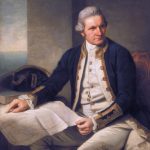 While visiting Alaska a few years ago, Bob and I kept hearing about Captain James Cook. I suppose I had probably heard a little about him at one point or another during my school years, but as often happens with kids, I wasn’t really interested…at least not until I saw Alaska for myself. Then, the places that were discussed in history actually came to life, because I was there in person. In reality, Captain Cook had a direct impact on several areas of the west coast of the United States, including the Puget Sound in Washington and areas of Oregon. Cook’s two ships, the Discovery and Resolution, had worked their way northwest from what is now Oregon and Puget Sound, along the British Columbia and Alaska coast, hoping to find the long sought after Northwest Passage to Europe.
While visiting Alaska a few years ago, Bob and I kept hearing about Captain James Cook. I suppose I had probably heard a little about him at one point or another during my school years, but as often happens with kids, I wasn’t really interested…at least not until I saw Alaska for myself. Then, the places that were discussed in history actually came to life, because I was there in person. In reality, Captain Cook had a direct impact on several areas of the west coast of the United States, including the Puget Sound in Washington and areas of Oregon. Cook’s two ships, the Discovery and Resolution, had worked their way northwest from what is now Oregon and Puget Sound, along the British Columbia and Alaska coast, hoping to find the long sought after Northwest Passage to Europe.
In early June 1778, Captain Cook and his men were in the Cook Inlet, hoping it would lead to the imagined passageway to Europe. It didn’t, of course, but once again Cook sent his crew exploring in small boats. Their adventures there led to the naming of Turnagain Arm, which Captain Cook originally called River Turnagain. It was so named because it was a disappointing “turn again” for Cook’s crew. The problem they were having was because Turnagain is subject to climate extremes and large tide ranges. During high tide, taking a boat in is simple, but if you don’t get out before low tide, you will find yourself fighting the quicksand-like mudflats that make up the beaches along Turnagain Arm in low tide.
In the times that Captain Cook was exploring for England, it was customary to name places after places and people in England. The visit to Cook Inlet was part of Cook’s longer exploration of the Alaska coast from which included a stop in Prince William Sound, which Cook named, along with Bligh Reef in the Sound. Bligh Reef would become famous in 1989 when the tanker Exxon Valdez ran aground on it and spilled millions of gallons of crude oil. Prince William Sound, interestingly, was almost named “Sandwich Sound” by Cook after the Earl of 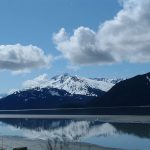 Sandwich in England, and who also, by the way, invented the sandwich as a food item. The Sound was renamed by Cook after Prince William, a descendent of the royal family when his journal was published. Leaving Prince William Sound, Cook ventured west along the Alaska coast to explore further, and after leaving Cook Inlet, he named Bristol Bay after Admiral Earl of Bristol, and Norton Sound after Sir Fletcher Norton, then Speaker of the British House of Commons. As he continued his quest for the Northwest Passage, Cook entered the Chukchi Sea through the Bering Strait and, amazingly, got as far as Icy Cape, on Alaska’s northwest coast, before being stopped by ice. In fact, the two ships were almost trapped by ice the off of Icy Cape.
Sandwich in England, and who also, by the way, invented the sandwich as a food item. The Sound was renamed by Cook after Prince William, a descendent of the royal family when his journal was published. Leaving Prince William Sound, Cook ventured west along the Alaska coast to explore further, and after leaving Cook Inlet, he named Bristol Bay after Admiral Earl of Bristol, and Norton Sound after Sir Fletcher Norton, then Speaker of the British House of Commons. As he continued his quest for the Northwest Passage, Cook entered the Chukchi Sea through the Bering Strait and, amazingly, got as far as Icy Cape, on Alaska’s northwest coast, before being stopped by ice. In fact, the two ships were almost trapped by ice the off of Icy Cape.
During his travels, Captain Cook named many other places, including Mount Edgecumbe and Cape Edgecumbe after George, Earl of Edgecumbe. He broke from protocol in naming Mount Fairweather and Cape Fairweather, using the fact that he had good weather at the time of his exploration, as inspiration for the names. Cross Sound was so named because he found it on May 3, designated on his calendar as Holy Cross day. Cape Suckling was named after Maurice Suckling, comptroller of the Royal Navy when Cook left England. Controller Bay was probably also named after Maurice Suckling, but the Russians translated the name to Zal Kontrolyer on the Hydrogaphy Department Chart 1378, dated 1847, and so it remained Controller Bay. Cape Hinchinbrook was named after Viscount Hinchinbroke. Snug Corner Cove was so named because Captain Cook thought, “And a very snug cove it is.” Montague Island was named after John Montagu, Earl of Sandwiche, the son of Viscount Hinchinbroke. The list of names and their origins goes on and on, but I find these the most interesting.
During his third visit to the Sandwiche Islands, which we now know as Hawaii, Captain James Cook lost his life 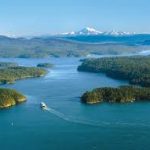 in a mob fight with the Hawaiian natives, who wanted one of his boats. As the men came ashore, the Hawaiians greeted Cook and his men by hurling rocks at them. They then stole a small cutter vessel from the Discovery. Negotiations with King Kalaniopuu for the return of the cutter collapsed after a lesser Hawaiian chief was shot to death, and a mob of Hawaiians descended on Cook’s party. The captain and his men fired on the angry Hawaiians, but they were outnumbered. Only a few managed to escape to the safety of the Resolution. Captain Cook was killed by the mob on February 14, 1779. A few days later, the Englishmen retaliated by firing their cannons and muskets at the shore, killing some 30 Hawaiians. The Resolution and Discovery eventually returned to England.
in a mob fight with the Hawaiian natives, who wanted one of his boats. As the men came ashore, the Hawaiians greeted Cook and his men by hurling rocks at them. They then stole a small cutter vessel from the Discovery. Negotiations with King Kalaniopuu for the return of the cutter collapsed after a lesser Hawaiian chief was shot to death, and a mob of Hawaiians descended on Cook’s party. The captain and his men fired on the angry Hawaiians, but they were outnumbered. Only a few managed to escape to the safety of the Resolution. Captain Cook was killed by the mob on February 14, 1779. A few days later, the Englishmen retaliated by firing their cannons and muskets at the shore, killing some 30 Hawaiians. The Resolution and Discovery eventually returned to England.

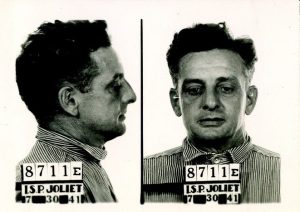 Many things that used to be illegal, are legal today…things like inter-racial marriage, marijuana (now legal in some states), and booze…believe it or not. Booze went from being legal, to being illegal in 1920, and back to legal in 1933. During those years while it was illegal, as with any law, there were those who broke the law and did it anyway. With booze, the problem, like with marijuana…because it was illegal, was no legal source for it. Enter the Bootlegger. Bootleggers, made their own booze and sold it on the black market of the day. The booze, often called Moonshine, was probably stronger than what booze would have been if it had been regulated and made legally, but an illegal product, is made to different standards, and often contains a much higher concentration than if it were legal.
Many things that used to be illegal, are legal today…things like inter-racial marriage, marijuana (now legal in some states), and booze…believe it or not. Booze went from being legal, to being illegal in 1920, and back to legal in 1933. During those years while it was illegal, as with any law, there were those who broke the law and did it anyway. With booze, the problem, like with marijuana…because it was illegal, was no legal source for it. Enter the Bootlegger. Bootleggers, made their own booze and sold it on the black market of the day. The booze, often called Moonshine, was probably stronger than what booze would have been if it had been regulated and made legally, but an illegal product, is made to different standards, and often contains a much higher concentration than if it were legal.
There have been a number of shows and movies that have almost romanticized bootlegging, but in reality, it was a highly dangerous occupation…if it could be called that. I’m sure there were a few non-violent 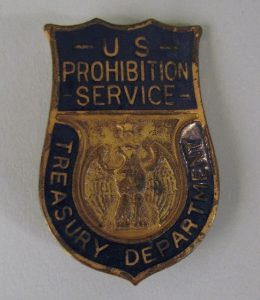 bootleggers…until they had to become violent to protect their stash and their territory. Men like Roger “The Terrible” Touhy, Al Capone, and Roy Olmstead (nicknamed the “King of the Puget Sound Bootleggers”), did everything in their power to bring liquor to those who wanted it…for a price, of course. They had to make a profit and hazard pay was essential too. Early bootleggers smuggled European liquor in, but that quickly became very dangerous, so the bootleggers started to make their own. Every time the prohibition officers caught a bootlegger, the liquor was disposed of…often into the sewer drains. Prohibition officers went everywhere. They were in the cities and the country…anywhere that their intel indicated that a bootlegger had a still in the area. The Temperance Society insisted that they remove every drop of the “demon liquor” from this country. They were convinced that liquor was the root of all evil…so to speak.
bootleggers…until they had to become violent to protect their stash and their territory. Men like Roger “The Terrible” Touhy, Al Capone, and Roy Olmstead (nicknamed the “King of the Puget Sound Bootleggers”), did everything in their power to bring liquor to those who wanted it…for a price, of course. They had to make a profit and hazard pay was essential too. Early bootleggers smuggled European liquor in, but that quickly became very dangerous, so the bootleggers started to make their own. Every time the prohibition officers caught a bootlegger, the liquor was disposed of…often into the sewer drains. Prohibition officers went everywhere. They were in the cities and the country…anywhere that their intel indicated that a bootlegger had a still in the area. The Temperance Society insisted that they remove every drop of the “demon liquor” from this country. They were convinced that liquor was the root of all evil…so to speak.
The bootleggers quickly became Mob leaders with their own gangs, and crossing them quickly became very dangerous. They would even frame or kill their competition, in fact it happened often. Al Capone framed Roger Touhy for kidnapping by his bootlegging rivals with the help of corrupt Chicago officials, was serving a 99-year sentence for a kidnapping he did not commit. He was recaptured a couple of months later. The two men hated each other bitterly, and when it was finally proven that Touhy had been framed, he was released. Three weeks 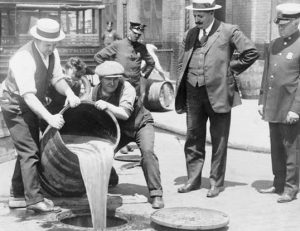
 later as he walked into his sister’s house, Touhy was gunned down. Right before he died, he said, “I’ve been expecting it. The b*******s never forget.” No arrests were made. I wonder if anyone really tried. Those were dangerous times, and one gang often retaliated against another. Even after Prohibition was repealed in 1933, bootleggers did not become extinct, because there were still counties and cities who continued Prohibition. Where there is a law, there are lawbreakers.
later as he walked into his sister’s house, Touhy was gunned down. Right before he died, he said, “I’ve been expecting it. The b*******s never forget.” No arrests were made. I wonder if anyone really tried. Those were dangerous times, and one gang often retaliated against another. Even after Prohibition was repealed in 1933, bootleggers did not become extinct, because there were still counties and cities who continued Prohibition. Where there is a law, there are lawbreakers.

